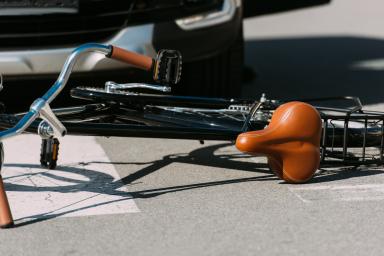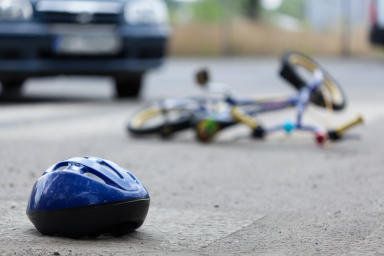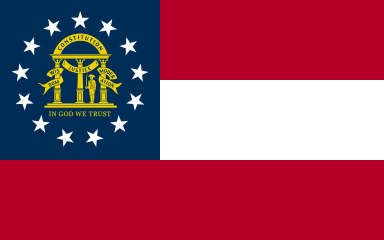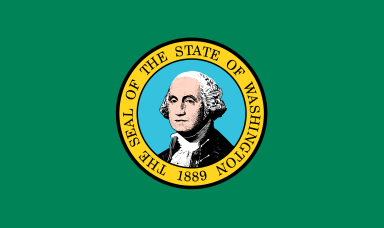Nevada Bicycle Laws

Nevada has abundant bike paths, parks, and trails, making the state a popular destination for cyclists. The state's biking clubs have a rich history, with some dating back to the early European settlement of Nevada. Cyclist safety is important in the state, which is why it has implemented legislation to ensure the well-being of cyclists and promote their safe coexistence with other road users.
Understanding the bike laws in Nevada is crucial for both cyclists and motorists. Knowing the rules and regulations when bicycling allows riders to make informed decisions, anticipate potential risks, and navigate traffic more effectively. This also helps reduce the risks of accidents, injuries, and conflicts on the roads.
According to the Nevada Department of Transportation’s Safety Crash Facts report, there has been a general increase in fatalities and fatal crashes over the past decade in the state. The number of fatalities rose from 257 in 2010 to 304 in 2019, while fatal crashes increased from 235 in 2010 to 285 in 2019. These numbers underscore the significance of adhering to bicycle laws to reduce the risk of accidents.
This article presents key information that every cyclist should know about.
Nevada Bicyclist Rights
Every person riding a bicycle on a roadway in Nevada is granted the same rights and responsibilities as drivers of motor vehicles. This means that bicyclists are entitled to the same level of respect and protection as any other road user. Concurrently, they are expected to adhere to traffic laws and regulations to keep themselves and others safe.
Here are some pointers to keep in mind:
Bicyclists should travel as close to the right side of the roadway as practicable, except when passing other vehicles or preparing for a turn. This positioning allows for smoother traffic flow and makes it easier for motorists to overtake the bicyclist safely.
To ensure the safety of all road users, bicyclists should refrain from attaching or towing any additional items to their bikes. These attachments can affect the stability and maneuverability of the bicycle, increasing the chances of accidents.
Bicycles are designed to carry a specific number of people, and it is important to adhere to these limits.
Cyclists should travel at a speed that is appropriate to the flow of traffic.
When carrying a bundle or package while riding, at least one hand must be able to maintain contact with the bicycle at all times.
Cyclists are obligated to follow the majority of traffic regulations applicable to motor vehicle drivers. This requirement aims to prioritize bicycle safety by ensuring that cyclists obey similar rules on the road.
Rules in Cycling with Traffic in Nevada
Nevada keeps it simple and straightforward when it comes to bike and car safety on the road. Keep in mind that the state treats all vehicle operators equally in terms of penalties, which means cyclists can be cited for violating regulations and receive the same fines and punishments as motorists. Below are key rules when riding in traffic:
Bicycles can ride on streets statewide and are usually allowed on sidewalks unless local regulations say otherwise (common in big cities like Reno).
Cyclists should know that motor vehicles are urged to maintain a three-foot distance from them, known as the “three feet of clearance law.” Violating this law and causing injury or death to a cyclist can result in penalties for the driver.
Cyclists should generally ride as far to the right as possible, except in situations where it is unsafe (due to debris, wildlife, or construction), when turning left, or when traveling at the same speed as surrounding traffic.
While cyclists should use clearly marked bike lanes when available, riding on parallel bike paths is not strictly mandated but is recommended.
Hand Signals
When cycling in Nevada, it is important to use hand signals to indicate your intentions to other road users. The hand signal rules for cycling are the following:
Night Cycling Rules in Nevada
Reports indicate that nearly half of all fatal speeding-related crashes in the state occur at night in illuminated and non-illuminated areas. Rules for night cycling exist to prioritize the safety of cyclists and other road users.
During nighttime, visibility is significantly reduced, making it crucial to have specific regulations in place. Adhering to standards is crucial to preventing accidents, mitigating risks, and ensuring the well-being of all road users during low-light conditions.
Certain equipment requirements are enforced to enhance visibility and promote safety. These include:
Front white light - A white light must be mounted on the front of the bicycle. It should be visible from a distance of at least 500 feet, allowing it to effectively alert others of the cyclist's presence.
Rear red reflector - A red reflector must be attached to the back of the bicycle. It should be visible when hit by car beams from a range of 50 to 300 feet, making sure that drivers can identify the bicycle from considerable distance.
Reflective material on sides - Reflective material must be present on both sides of the bicycle. This material should be highly visible and capable of reflecting light from headlamps, enabling motorists to spot the bicycle from up to 600 feet away.
Brake system - It is mandatory for bicycles to be equipped with a functioning brake. This ensures that cyclists have the means to slow down or stop when necessary.
Cycling Under the Influence Law in Nevada
Individuals who choose to ride a bicycle while under the influence of alcohol or drugs can be charged with reckless endangerment. Reckless endangerment is defined as ”willfully or intentionally disregarding the safety of others or their property.” Riding a bike while under the influence can potentially fall under this broadly defined crime, as impaired cycling poses a risk that may result in damage to other drivers, pedestrians, and property.
A charge of reckless endangerment that does not involve serious injury or death is classified as a gross misdemeanor. This offense carries a maximum jail sentence of 364 days and a fine not exceeding $2,000. On the other hand, if the charge involves serious injury or death, it is categorized as a category C felony, which can result in imprisonment for up to five years and a maximum fine of $10,000.
If you have been arrested for biking under the influence, it is generally advisable to seek legal representation. While the specific circumstances of each case may vary, consulting with a lawyer can provide you with crucial guidance and help protect your rights throughout the legal process.
Helmet Requirements
Currently, Nevada does not have a statewide law that requires all bicyclists to wear helmets. However, both the Nevada Department of Transportation and the National Highway Traffic Safety Administration strongly encourage bikers to wear helmets for their safety.
It is worth noting that a recent legislative proposal, Assembly Bill 187, which aimed to mandate helmet use for children riding bicycles, has stalled in the legislature. As of now, the bill has not been passed into law, and helmet use remains a personal choice for bicyclists in Nevada.
While there is no legal requirement, wearing a helmet is widely recognized as an important safety measure that can significantly reduce the risk of head injuries in the event of a bicycle accident. It is recommended for all bicyclists, regardless of age, to wear a properly fitted and approved bicycle helmet.
Is Nevada a No-Fault State for Bike Accidents?
Nevada is not a no-fault state, which means, the person who is deemed responsible for causing a traffic accident is held financially liable for the resulting damages. If a bicyclist is injured in a collision with a motor vehicle, he or she has the right to pursue a claim against the at-fault driver's insurance company. This claim seeks compensation for various losses, including medical expenses, pain and suffering, lost wages, property damage, and other related costs.
To seek financial compensation, the bicyclist would typically file a claim with the at-fault driver's insurance company. The insurance company will investigate the accident, assess the damages and injuries, and negotiate a settlement. If a fair settlement cannot be reached, the bicyclist may choose to file a lawsuit and pursue his case in court.
It is important for bicyclists involved in accidents to gather evidence, such as photographs, witness statements, and medical records, to support their claim for compensation. Seeking legal advice from an experienced personal injury attorney can be beneficial in navigating the legal process, understanding one's rights, and ensuring fair compensation for the injuries and damages suffered in the bike accident.
How Much Can Someone Sue for a Bicycle Accident in Nevada?
In Nevada, the mandatory liability insurance coverage for bicycle accidents is set at $15,000 per person and $30,000 per accident. This means that an injured party involved in a bicycle accident can potentially sue for damages up to these specified limits. However, note that these figures represent the minimum insurance requirements mandated by the state.
When determining the amount someone can sue for in a bicycle accident, various factors come into play. These may include the extent of the injuries sustained, medical expenses, lost wages, pain and suffering, property damage, and other related costs resulting from the accident. The specific circumstances and damages unique to each case will influence the potential compensation amount.
Economic Damages
Economic damages in a bicycle accident claim are designed to provide compensation for the financial costs and losses that result from the accident. These damages aim to help victims recover and offset the various expenses they may incur due to the incident.
The several types of economic damages include:
Hospital bills
Lost earnings
Property damages
Follow–up medical care
Loss of use of limbs or bodily functions
Nursing care
Calculating the total damages the injured party has sustained can help determine the value of a bicycle accident claim. When calculating economic damages, financial losses incurred, such as medical bills, property damage, and any other expenses directly resulting from the accident, are added up. Any income or earning capacity lost due to the accident is also included in the computation.
Non-Economic Damages
Non-economic damages refer to the intangible impact or harm experienced by the victims. These damages go beyond financial losses and are intended to provide compensation for the physical and emotional pain, suffering, and other non-monetary consequences resulting from an accident.
The types of non-economic damages include, but are not limited to the following:
Depression and anxiety
Disfigurement
Emotional distress
Loss of consortium
Embarrassment
Calculating the value of non-economic damages is more complex compared to economic damages. The severity of the injuries sustained, the length of time needed for physical recovery, and the presence of permanent scarring or disability are factors that influence the value of these damages.
What Is Nevada’s Statute of Limitations for Bicycle Accidents?
The statute of limitations for bicycle accidents in Nevada is two years from the date of the injury or when the injury should have been discovered. This means that individuals who wish to file a lawsuit seeking compensation for injuries or damages must do so within this time frame.
However, there are exceptions to the statute of limitations. These exceptions take into account specific circumstances that may extend or alter the deadline for filing a bicycle accident claim.
The time limit can be paused or extended under the following circumstances:
Plaintiff’s age - If the plaintiff is a minor at the time of the accident, the statute of limitations may be tolled or paused until they reach the age of 18. This allows them or their legal guardian to file a claim within a reasonable time after reaching adulthood.
Defendant's absence from Nevada - The statute of limitations for filing a lawsuit for a bicycle accident in Nevada is paused or suspended when a defendant is outside of the state.
Parties in a country at war - If one of the parties involved in a legal dispute is a citizen of a country that the United States is at war with, the statute of limitations may be suspended until the end of the hostilities.
Fraudulent concealment - If an attorney, veterinarian, or accountant intentionally conceals an illegal act that the plaintiff was unaware of, the statute of limitations may be tolled until the plaintiff discovers or reasonably should have discovered the concealment.
These exceptions to the statute of limitations provide additional time for plaintiffs to pursue their claims under specific circumstances. You may consult with a qualified attorney to determine how these exceptions may apply to your particular case.
Legal Resources for Nevada Bicycle Accident Victims
Nevada State Bar Association
The Nevada State Bar Association is an essential resource for individuals seeking legal assistance following a bicycle accident. With its extensive knowledge and resources, it can offer valuable guidance in finding qualified attorneys in a specific geographical area. One of the notable services provided by the Nevada State Bar Association is its lawyer referral service, which aims to connect individuals with attorneys who specialize in handling bicycle accident cases.
Nevada Legal Services
The Nevada Legal Services is a nonprofit organization that provides free legal assistance to low-income individuals. As a valuable resource for the community, NLS offers support for a wide range of legal issues, including those related to bicycle accidents. Its primary focus is to ensure that everyone, regardless of financial circumstances, has access to legal representation and aid.
Nevada Department of Transportation
The Nevada Department of Transportation’s website provides a wealth of information for bicyclists in Nevada. By visiting the website, individuals can access valuable resources on laws and regulations, safety tips, and reporting procedures for bicycle accidents.
Legal Aid Center of Southern Nevada
The Legal Aid Center of Southern Nevada is a private, nonprofit organization that provides legal assistance to individuals in Clark County, Nevada. Its professionals and volunteers work to address the legal needs of vulnerable citizens, helping to ensure equal access to justice for all. This is a great resource for individuals in Southern Nevada who need legal assistance for their bicycle accident cases.
Nevada Justice Association
The Nevada Justice Association is a professional organization comprising attorneys who specialize in personal injury law, including bicycle accident cases. As a dedicated resource, the NJA aims to support individuals seeking legal assistance by connecting them with highly qualified attorneys. Its website provides a directory of member attorneys who can offer legal representation and guidance.
Expertise.com StaffAuthor
Step into the world of Expertise.com, your go-to hub for credible insights. We don't take accuracy lightly around here. Our squad of expert reviewers, each a maestro in their field, has given the green light to every single article you'll find. From rigorous fact-checking to meticulous evaluations of service providers, we've got it all covered. So feel free to dive in and explore. The information you'll uncover has been stamped with the seal of approval by our top-notch experts.




